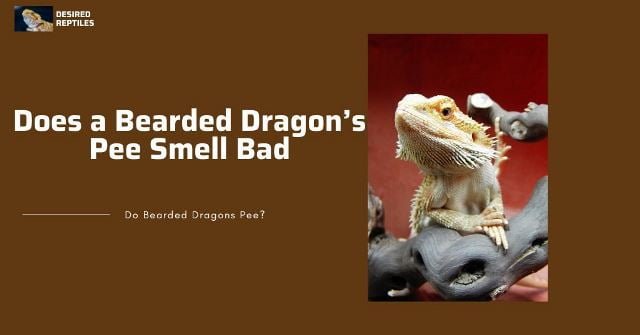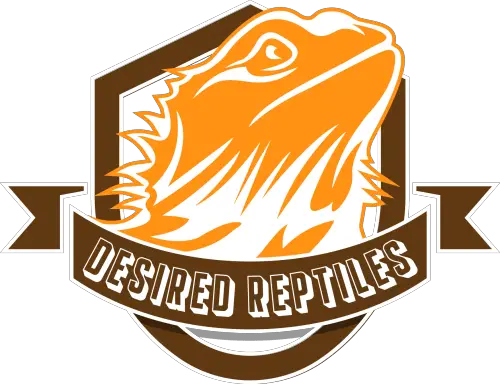Have you ever wondered what your bearded dragon’s urine looks like? Well, it’s pretty natural to guess as it’s not the typical urea waste you get from your cats or dogs. Since their species evolved to survive the scorching deserts, they pass urea a little differently making them fit for their environment.
Bearded dragons “pee” a crystallized version of urine called urate, which is mostly passed out with the poop! They do not excrete the typical liquid urea as they need to maintain hydration, which is why you must have missed the urate attached to your pet’s feces.
In this article, we’ll talk about how your bearded dragon pees, what it looks like, and when you should be worried.
Understanding Bearded Dragon Pee: What Is Urate?
As mentioned earlier, bearded dragons pass urea as urate, a crystallized form of urine, which is excreted mostly attached to the poop. There are a few times when the urate is passed on its own, and that’s normal. Sometimes, food takes longer to digest and your beardie might just need to pee before pooping a few days later.
Bearded dragons evolved to solidify their urine ensuring that their hydration is maintained since they get limited access to moisture in their environment. If you were to develop urates, it may be due to dehydration which can lead to serious kidney or urinary tract infections. Have you heard of the term “kidney stones”? That’s what happens when your urine forms little crystals in the kidney, in this case, called urate.
What Is Your Beardie’s Urate Telling You?
If you suspect that your bearded dragon is ill, you may know from the vibrancy of its skin, its responsiveness, its general body structure, and its activity. However, one helpful sign you can use is the appearance of the urate.
Examining the urate is one of the major ways to determine your pet’s health, and should be taken seriously. There are 4 different urate types and what they mean:
| Urate | Meaning |
|---|---|
| All white with a firm but chalky consistency | Healthy bearded dragon with normal excrement |
| Yellowish and sometimes bigger than normal | Urate plug which is due to malnutrition or dehydration |
| Reddish or blood-stained | Impaction and injury are possibly present. It’s highly dangerous and should be treated with immediate care. |
| Watery and soft | Diarrhea or parasites present |
Healthy Beardie Urate: All White
A healthy bearded dragon’s urate is white with a firm consistency. It measures one-quarter of the size of the actual poop, or if passed alone, is nothing more than a centimeter in length and half a centimeter thick. It should be hard enough that when you hold it between your fingers it feels like a piece of chalk, and soft enough for you to smash with a press. Also, it’s normal to see residue on the urate which would be poop or mucus.
A healthy urate, whether passed with poop or on its own can sometimes be accompanied by moisture, almost like a tiny pool surrounding the clump. If this pool happens to be more than three times wider than the space occupied by the solid waste, then something may be wrong with your beardie. At this point, you should visit the vet for an examination.
Now that we know a healthy dragon urate, let’s move on to the horrors of beardie pee.
Clogged Or Impacted Beardie: Yellowish Urate
A urate plug is a large clump of urate that has been nesting in a bearded dragon’s tract. It would be significantly larger than the normal urate sizes and would be passed with mucus either infused into or surrounding the clump, making it yellow. Urate plugs can be a result of dehydration or improper diet.
Similar to how humans develop kidney stones, excessive amounts of protein, calcium, or dehydration can result in a plug that could take days to weeks for your beardie to pass out. As you can imagine, it certainly will be painful and uncomfortable for your pet to deal with.
If you observe that your dragon hasn’t excreted in a couple of days, it is likely impacted and so, a visit to the vet should be made immediately. In the worst case, surgery will be needed to take out the urate plug. Otherwise, a few bowel-stimulating drugs and a change in diet will be recommended.
Injured Beardie: Reddish & Yellowish Urate
As a result of impaction, a few broken blood vessels may cause the urate to get stained with blood. This is highly dangerous and should be taken very seriously! If your beardie has blood in its urate, it could be susceptible to infection and will most likely be in significant pain. The urate could also be unusually large or hard leading to impaction or clogging which could result in your pet dying!
Beardie With Diarrhea: Watery Or Soft Urate
Sometimes, when a bearded dragon is suffering from diarrhea, it may pee liquid urine instead of the regular solid urate. It’s a serious concern because the dragon loses nutrients with the fluid caused by diarrhea. This situation usually occurs if your pet is eating an imbalanced protein/veggie diet where the greens are too prominent, or consistently eating watery vegetables like lettuce and tomatoes.
In addition, parasites can induce diarrhea which is why a visit to the vet is mandatory for an accurate diagnosis of the problem. Your beardie’s vet will take a poop sample, run some tests, and may prescribe deworming medication or adjust its diet.

How Often Do Bearded Dragons Pee?
Bearded dragons pee as much as their age requires them to. Usually, this goes in sync with how much they eat. Baby beardies and juveniles can pee 1 to 3 times a day, while subadult and adult beardies pee once a day to 3 times a week.
It’s common for beardies to infrequently excrete. In the wild, their source of hydration is from the live food they consume or a few dew drops here and there, which affects their pooping or peeing frequency.
How Do I Help My Bearded Dragon To Pee?
If your bearded dragon is impacted or clogged by urate, you can carry out a few measures to help it relieve the waste and clear its gut.
Here are two effective ways to help your bearded dragon pee:
Give Your Beardie A Warm Soak And Massage
Soaking your bearded dragon in a bath is a great way to help it get its bowels moving and remedy the clog. All you have to do is put your pet in shallow water with its butt fully immersed, then slowly massage the belly from chest to tail. Rub for 5 minutes if your beardie permits, and then let it sit or move around in the water for 10 more minutes before you take it out of the bath.
If your dragon is uneasy in the bath, place a small rock for it to perch on with its forelimbs while its waist area is still submerged. This will help it feel less anxious.
Feed It Watery Vegetables
Normally, it’s dangerous to consistently feed your pet vegetables with high water content because they hold little mineral value and can cause diarrhea. However, if your bearded dragon is impacted and unable to pee, watery vegetables like lettuce, tomatoes, and spinach can help push out the urate plug before you return to the proper diet. Try feeding your pet the veggies for two days to see what happens. If the impaction persists, consult the veterinarian for a proper remedy.

Do Bearded Dragons’ Pee Smell Bad?
Most of the time, the urate comes along with the poop and it does smell bad! It’s surely not a killer, but it’s enough to have you scrunch your nose. On its own, the urate may not smell as horrible as the poop, but it leaves a lingering stench that very much resembles urine partly because the clump is small. Perhaps if your bearded dragon dropped a urate plug the size of its head, then you could grab a disheartening whiff!
How To Safely Clean Bearded Dragon Waste And Remove Odor
Removing the clump from the enclosure may not be enough to eliminate the smell after your bearded dragon drops urate or poop. Remember that sometimes the waste is passed with fluid that dries up in the tank causing the smell to linger.
The safest cleaning products you can use in a beardie’s enclosure to ward off odor are vinegar and water. All you need to do is mix equal amounts in a spray bottle, spray some on the targeted spots, wipe off with a paper towel or sponge, and you’re good to go!
I prefer this method because it’s the most natural and safest technique you can apply for your beardie’s health. Sure, some disinfectants and deodorizers are relatively safe, but if you decide to be safer than ever, vinegar and water are the way to go.
The Conclusion
At the end of our discussion, we have established that bearded dragons do pee including how crucial it is to understand their urate. Since you now know what to look for, you’ll be able to track your dragon’s health through its urea. If you notice a change in consistency or color, contact your vet and take your pet for examination immediately before it gets out of hand. Good luck!
